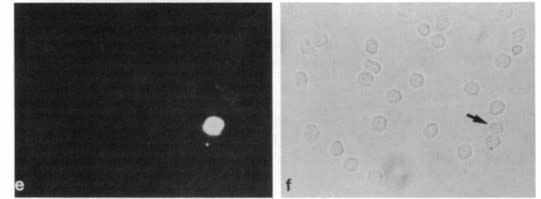
Cat. #161656
Anti-integrin a3 inhibiting
Cat. #: 161656
Sub-type: Primary antibody
Target: Integrin alpha-3 (CD49b)
Class: Monoclonal
Application: FACS, Function Blocking, Immunofluorescence, Immunohistochemistry, Immunoprecipitation
Reactivity: Human
Host: Mouse
£300.00
This fee is applicable only for non-profit organisations. If you are a for-profit organisation or a researcher working on commercially-sponsored academic research, you will need to contact our licensing team for a commercial use license.
Contributor
Inventor: Elizabeth A. Wayner, William Carter
Institute: Fred Hutchinson Cancer Research Center
Primary Citation: Wayner et al.1987. Journal of Cell Biology.105(4):1873-84. PMID: 2822727
Tool Details
*FOR RESEARCH USE ONLY
- Name: Anti-integrin a3 inhibiting
- Research fields: Cell biology
- Clone: P1B5
- Tool sub type: Primary antibody
- Class: Monoclonal
- Molecular weight: 119kDa
- Reactivity: Human
- Host: Mouse
- Application: FACS, Function Blocking, Immunofluorescence, Immunohistochemistry, Immunoprecipitation
- Description: Signals transduced by integrins play a role in many biological processes, including cell growth, differentiation, migration and apoptosis. Integrin ?3 (P1B5) is a mouse monoclonal antibody developed to identify four distinct classes (I, II, III, IV) of cell surface receptors for native collagen. P1B5 inhibited attachment to type VI and I collagens and partially inhibited attachment to fibronectin and laminin as well.
- Immunogen: HT1080 human fibrosarcoma cell line
- Isotype: IgG1
Target Details
- Target: Integrin alpha-3 (CD49b)
- Molecular weight: 119kDa
- Target background: ?2?1 complex of Collagen receptors: I, II, III, IV. P1B5 inhibits cell adhesion to collagen and fibronectin.
Applications
- Application: FACS, Function Blocking, Immunofluorescence, Immunohistochemistry, Immunoprecipitation
- Application notes: A good starting concentration for immunohistochemistry (IHC), immunofluorescence (IF), and immunocytochemistry (ICC) when using mouse Ig is 2-5 ug/ml. For western blots, the recommended concentration range of mouse Ig 0.2-0.5 ug/ml. In general, rabbit antibodies demonstrate greater affinity and are used at a magnitude lower Ig concentration for initial testing. The recommended concentrations for rabbit Ig are 0.2-0.5 ug/ml (IF, IHC and ICC) and 20-50 ng/ml (WB).
Handling
- Storage conditions: For immediate use, short term storage at 4°C up to two weeks is recommended. For long term storage, divide the solution into volumes of no less than 20 ul for freezing at -20°C or -80°C. The small volume aliquot should provide sufficient reagent for short term use. Freeze-thaw cycles should be avoided. For concentrate or bioreactor products, an equal volume of glycerol, a cryoprotectant, may be added prior to freezing.
References
- Wayner et al.1987. Journal of Cell Biology.105(4):1873-84.PMID: 2822727
- Carter et al.1990. J Cell Biol.111(6 ):3141-54.PMID: 2269668
- Symington et al. 1993.J Cell Biol.120(2):523-35.PMID: 8421064



